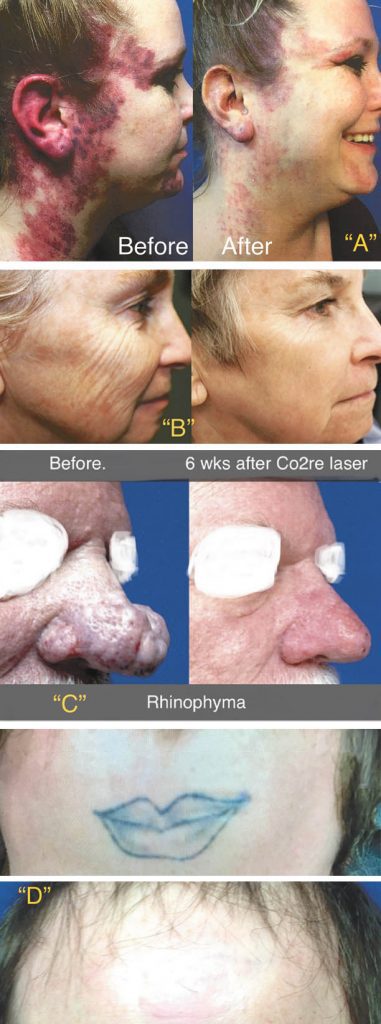

The first laser was built in 1960 by Theodore H Maiman based on theoretical work by Charles Townes (Nobel prize in 1964), and Arthur Schawlow, (Nobel prize in 1981).
Laser is using light that is COHERENT, identical wavelength with special coherence, the light is all parallel. This allows for very precise and potential high energy input.
Lasers have specific targets based on color.
Some target red, black or brown and, some target water. How does this apply to medicine? Well, we have pigments and water in are body tissue.
Lasers can be ablative, (burn thru layer of tissue) or non-ablative, (does not destroy the top layer of skin)
Medical lasers come in many varieties. There is a lot of confusion about what they are and what they can do. This is often made worse by use of the LASER acronym for non-laser devices, such as an IPL, (intense pulsed light.) This is the most commonly miss labeled device. It uses a strong light source and a light filter. It is not as strong as real laser and is not specific to any color etc.
Pulsed Dye Laser is a non-ablative device that uses laser technology to target particularly red color. this is a good choice for blood vessels, spider veins, inflamed areas, scarring, rosacea, and birth marks. This laser also has a ability to slightly tighten the skin. Photos “A” show removal of a hemangioma, a vascular malformation after about 5 treatments in office.
The Yag laser is normally used on non-ablative mode and targets brown color, thus, a good choice for brown age spots etc.
Co2 laser targets water and is ablative. This is used as a destructive laser now often in a fractional function to resurface skin, skin tightening (including rejuvenation of the vaginal area.) Photo “B & C” shows the rejuvenating effects on face for wrinkles and a treatment for Rhinophyma.
Tattoo removal often uses a large array of lasers to target different colors. The Q-switch Laser is often used for regular tattoo color. The most consistent way to remove tattoos is laser technology. Photo “D”
Hair removal should be called “hair reduction.” Some lasers, such as an Alexandrite or a Q-switch, can be used for this purpose. Some practitioners might use an IPL, but this is not a laser. Hair removal is difficult and is best done by someone who specializes in the hair removal process.
The wide variety of lasers targets an array of conditions. It takes understanding and training to have the proper settings of a particular laser. For example, A CO2RE laser should only be done by a trained physician, as this is an actual procedure for resurfacing and will require a recovery period for the area treated. Medical laser technology is continually advancing, offering many applications in the field of medicine.
Gunnar Bergqvist, MD
Dr. Gunnar Bergqvist is double board certified by the American Board of Surgery and the American Board of Plastic Surgery. He maintains his certification in both and in addition to his training, completed a chief residency in both plastic surgery and general surgery. Dr. Bergqvist completed his training in Plastic Reconstructive & Microvascular Surgery at Duke University, the leading program in the world for Surgery. He also has additional training in Hand & Micro-surgery from the Christine Kleinert Institute. He gained his inspiration from his father who is a world-renowned Pediatric Neonatologist, M.D., PhD in Sweden; his sister, a professor and a pediatric neurologist at the Children’s Hospital of Pennsylvania in Philadelphia.
The Plastic Surgery Center of Naples
860 111th Ave., N., Suite #6, Naples Florida, 34108
239.431.7967 | www.SwedishDr.com
 Southwest Florida's Health and Wellness Magazine Health and Wellness Articles
Southwest Florida's Health and Wellness Magazine Health and Wellness Articles
